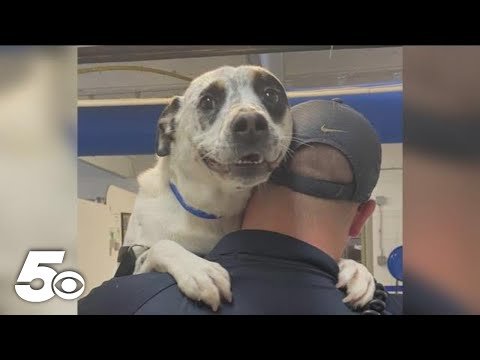Twice a year, many countries around the world adjust their clocks for Daylight Saving Time (DST).
While humans may grumble about losing an hour of sleep or rejoice at gaining an extra hour, our canine companions experience these time changes in their own unique ways.
This article explores how DST affects dog routines and offers tips for helping your furry friend adjust to the new schedule.
Understanding Circadian Rhythms in Dogs
Dogs, like humans, have internal biological clocks known as circadian rhythms.
These rhythms regulate various physiological processes, including sleep-wake cycles, hormone production, and feeding patterns.
Unlike humans, who rely heavily on external cues like clocks and schedules, dogs are more attuned to natural light cycles and their own internal rhythms.
This makes them particularly sensitive to sudden changes in their daily routines, such as those brought about by DST.
Want to keep up to date with new animal stories?
The Immediate Effects of Time Changes
When clocks “spring forward” or “fall back,” dogs may experience confusion and disorientation.
Their feeding times, walks, and playtime suddenly shift by an hour, which can lead to behavioral changes.
Some dogs may become more anxious or restless during this transition period.
Others might display changes in appetite or energy levels as they try to adapt to the new schedule.
Disruption of Feeding Schedules
One of the most noticeable impacts of DST on dog routines is the disruption of feeding schedules.
Many dogs are accustomed to eating at specific times each day.
When meal times suddenly shift by an hour, it can lead to hunger, digestive issues, or changes in bathroom habits.
Some dogs may become more vocal or exhibit demanding behavior around their usual feeding times.

Changes in Exercise and Bathroom Routines
DST can also affect a dog’s exercise and bathroom routines.
Dogs who are used to morning or evening walks at specific times may become confused or anxious when these activities suddenly occur at different light levels.
This can be particularly challenging for older dogs or those with strict bathroom schedules.
The change in daylight hours may also impact the duration and timing of outdoor activities, especially in areas with significant seasonal variations in daylight.
Sleep Pattern Disturbances
Just like humans, dogs may experience sleep disturbances due to DST changes.
Some dogs may have trouble settling down for the night or wake up earlier than usual.
This can lead to increased daytime fatigue or changes in behavior, such as increased napping or irritability.
The shift in natural light patterns can also affect a dog’s production of melatonin, the hormone that regulates sleep cycles.
Impact on Working Dogs and Service Animals
For working dogs and service animals, the effects of DST can be even more pronounced.
These dogs often have highly structured routines that are closely tied to human schedules.
The sudden shift in time can temporarily affect their performance and reliability.
Handlers and trainers need to be particularly attentive during these transition periods to ensure their canine partners can continue to perform their duties effectively.

Helping Your Dog Adjust to DST Changes
Fortunately, there are several strategies pet owners can employ to help their dogs adapt to DST changes more smoothly.
Gradually adjusting your dog’s schedule in 15-minute increments over several days can ease the transition.
Maintaining consistency in daily activities, such as feeding, walks, and playtime, can help reinforce the new routine.
Providing extra patience, attention, and comfort during the adjustment period can also help alleviate any stress or anxiety your dog may experience.
Long-term Considerations
While most dogs adapt to DST changes within a few days to a week, some may take longer to adjust fully.
Pet owners should be aware that the effects of DST on their dogs may vary from year to year.
Factors such as age, health conditions, and individual temperament can all influence how a dog responds to these time changes.
Conclusion
Daylight Saving Time, while a human construct, has tangible effects on our canine companions.
By understanding how these time changes impact dog routines, pet owners can take proactive steps to help their furry friends adjust more easily.
With patience, consistency, and a little extra TLC, dogs and their humans can navigate the bi-annual time shifts together, ensuring that both ends of the leash remain happy and well-adjusted.
Remember, every dog is unique, so pay close attention to your pet’s individual needs and behaviors during these transition periods.
By doing so, you’ll help ensure that your loyal companion continues to thrive, no matter what the clock says.
SHARE now with your friends!


